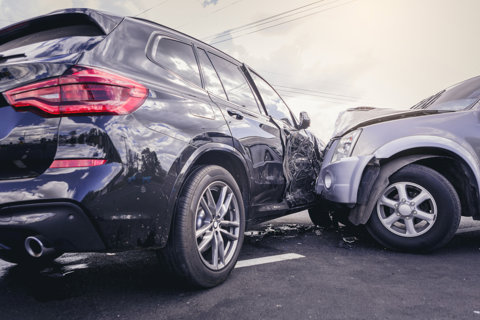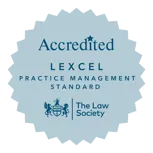UK university cities with the most road traffic accidents
Nine of the ten most dangerous universities for student drivers are located in London boroughs. King’s College London and London School of Economics and Political Science (LSE) share the top spot. Both are in Westminster, where the local authority has seen an average of 588 collisions a year, per 100,000 people.
Next is Imperial College London, based in Kensington and Chelsea, which recorded an average of 588 collisions a year per 100,000 people, followed by University College London (UCL), Birkbeck and SOAS - all boroughs with consistently high incident rates.
The most dangerous universities in London, with the highest number of average yearly collisions in their local authority per 100,000 of the population, are as follows:
1.King’s College London - 588
1. London School of Economics and Political Science - 588
3.Imperial College London - 422
4.UCL - 336
4.Birkbeck, University of London - 336
4.SOAS, University of London - 336
7.Queen Mary, University of London - 315
8.St George’s, University of London - 298
9.City, University of London - 285
With their dense urban populations and complicated road networks, it’s no surprise that London boroughs come out on top. However, it’s also important to note that these figures don’t necessarily mean that students are more likely to be injured - just that their campuses are in areas with higher volumes of traffic and people.
University cities with the most road traffic accidents - outside of London
Outside of the capital, students still face significant risks on the roads, particularly in densely populated or commuter-heavy areas.
The University of Hull ranks highest outside London, with an average of 244 collisions a year per 100,000 of the population, followed by Sussex and Surrey.
The top 10 most dangerous universities outside of London, with the highest number of average yearly collisions in their local authority per 100,000 of the population, are:
1.University of Hull - 244
2.University of Sussex - 220
3.University of Surrey - 217
3.Royal Holloway - 217
5.University of Portsmouth - 214
6.University of Nottingham - 210
7.University of Kent - 207
8.University of Birmingham - 191
9.Aston University - 191
10.University of Liverpool - 175
In some cases, higher collision rates may reflect regional infrastructure challenges or busy town centre roads. These rankings aren’t a warning against attending - but rather a tool to help students and families plan smarter around transport and safety.
Revealed: Campus crash zones
While university campuses are often designed with pedestrian access in mind, the roads just outside their boundaries often tell a different story. From high-speed dual carriageways to poorly marked roundabouts, several universities sit directly beside accident-prone routes that pose a real threat to students walking, cycling or driving.
When taking a closer look at road traffic accidents near the universities in the most dangerous local authorities across the last five years, Simpson Millar paid special attention to the DfT’s collision categorisation. Depending on the severity of an accident, it is classified as slight, serious or fatal.
At King’s College London, the immediate danger comes from the A3211, a fast-moving route skirting the Thames that has become a known accident hotspot. The surrounding network of roundabouts sees regular incidents, putting students walking between the Strand Campus and nearby facilities at increased risk.
The London School of Economics is located just north of the A4, another high-risk stretch in central Westminster. The road borders many university buildings and poses a constant hazard to students navigating between buildings or heading to nearby Covent Garden.
Around Imperial College London, three surrounding roads stand out for their accident counts. Exhibition Road has recorded 35 collisions, seven of which were serious, with hotspots clustering around the busy junctions. Queen’s Gate has seen 46 accidents, while Prince Consort Road has had seven, primarily concentrated near its intersections. These roads wrap around Imperial’s main South Kensington campus, where thousands of students cross daily.
At UCL, Gower Street has seen 16 road accidents, with six categorised as serious. Nearby Russell Square has experienced 12 collisions, including two serious incidents. These roads serve as key pedestrian routes to UCL’s main buildings and libraries, making them high-risk areas for foot traffic.
Across the board, it's clear that many of the most dangerous areas for students are right at the campus edges.
The safest cities for student drivers: Top 10 least dangerous universities
At the opposite end of the scale, the University of Manchester recorded the lowest rate of road collisions in its local authority relative to the population, with an average of just 24 yearly collisions per 100,000 people.
The top ten safest university cities, with the lowest number of average yearly collisions in their local authority per 100,000 of the population, are as follows:
1.University of Manchester - 24
2.University of Aberdeen - 35
3.University of St Andrews - 67
4.Cardiff University - 80
5.University of Bath - 87
6.University of Dundee - 88
7.Loughborough University - 92
8.University of Stirling - 97
9.University of Glasgow - 99
9.University of Strathclyde - 99
Interestingly, Bath, Loughborough and Stirling are campus universities, which means that teaching, accommodation and facilities are self-contained. These appear to offer safer environments and fewer road traffic accidents than sprawling city-centre campuses.
That said, it’s still important for students to take care, especially when travelling to placements, part time jobs or nightlife in nearby towns.
When are university roads the most dangerous?
Collision data reveals a clear pattern in terms of when incidents are most likely to occur.
October stands out as the most dangerous month - coinciding not just with the start of term, but with students adjusting to unfamiliar roads, darker evenings and increased traffic from parents and moving vans.
July and August are the next most dangerous months. This is also when university open days take place and tourists visit during the summer, which could mean higher volumes of people on the roads.
When it comes to days of the week, Fridays are by far the most dangerous for road traffic accidents. There are four times more incidents on a Friday than mid-week days like Wednesday.
Timing matters too, with most collisions occurring at 5pm. This was followed by 4pm and then 6pm, when lectures finish, commuter traffic begins and social plans start. It’s a reminder that even everyday activities, like heading to the library or meeting friends for dinner, can involve traffic hotspots.
Essential road safety tips for student drivers
For students preparing to move to a new city, or for parents researching on their behalf, this data should serve as more than just a curiosity. Road safety isn’t only about the number of crashes - it’s about understanding risk, recognising hotspots and making smart decisions around transport and housing.
Mark outlines five things about road safety that students should consider when going to university:
1. Choose accommodation with safe access
“Your halls or student flat might look perfect on a brochure, but what does the journey there look like? Check how close it is to fast-moving roads or confusing roundabouts. Look for properties with safe crossings nearby and avoid anything where you need to walk or cycle along unlit or narrow verges.”
2. Build confidence before hitting busy roads
“Driving in a university city can be overwhelming, especially if you’ve only recently passed your test. Start small by practicing on quieter local streets or during off-peak times. Build up your confidence before tackling busy dual carriageways or unfamiliar roundabouts, and don’t let pressure from friends or flatmates rush you into situations you’re not ready for.”
3. Avoid driving at high-risk times
“Fridays at 5pm are a perfect storm - students heading home, local workers commuting and people going out. In October, things get even busier as new routines settle in, daylight hours shorten and wet autumn weather starts to slow everything down. If you can, avoid being on the road during these peak times.”
4. Use public transport where possible
“If your university offers shuttle buses or subsidised public transport, these can be a really useful alternative to driving. These services reduce traffic around campus and might even help you save money, as you won’t need to pay for fuel.”
5. Speak up if something feels unsafe
“Don’t assume someone else will raise the alarm. If a road layout near your halls feels unsafe - or a crossing is hidden, unlit or missing entirely - tell your student union, halls manager or local council. Student reports have led to real changes in the past, including new crossings, lowered speed limits and added lighting. You have more influence than you think.”
What to do if you’re injured in a road collision at university, according to the experts
Whether you're walking back from a lecture, cycling across campus or behind the wheel, a road traffic collision can be physically and emotionally overwhelming. If you’re a student living away from home, it can be even more daunting.
That’s why it’s so important to understand your rights and the steps you should take if you're injured in a road accident. If you’re involved in a collision while at university, here are the steps Simpson Millar recommends:
1. Seek medical attention
Even if injuries seem minor, get checked by a healthcare professional. Not all symptoms appear right away, and a medical report is useful if you do want to make a claim later.
2. Report the accident
If police weren’t called at the scene, you should report the accident as soon as possible. This is especially important if there were injuries or damage to vehicles or property.
3. Gather evidence
Take photos of the scene, note road conditions, signage, and any visible injuries. If there were witnesses, ask for their contact details. These details can be vital in building your case.
4. Speak to a Solicitor
You can contact the Personal Injury team at Simpson Millar for a free consultation. They’ll let you know if you have a claim and talk you through the process.
5. Keep records
Hold onto medical bills, travel costs and any correspondence related to the accident. These can help ensure you get the compensation you’re entitled to.
According to the experts in the Road Traffic Accident team, you may be entitled to compensation if the incident was caused by:
- Another driver’s negligence
- Poor or confusing road signage
- Dangerous road conditions (e.g. potholes, poor lighting, faulty traffic lights)
Even if the accident seems minor at first, it’s worth speaking to a legal professional. Injuries like whiplash, concussions or fractures may not be obvious immediately, and can impact your studies, part-time work and general wellbeing.
Mark summarises: “We support people every year who’ve been involved in road traffic accidents - as drivers, passengers and pedestrians. For students, it can be especially disruptive you might miss lectures, need help managing a claim from afar, or worry about how it affects your studies. Our team provides clear, compassionate advice and takes care of the legal side so you can focus on your recovery.”
Simpson Millar can handle claims on a No Win, No Fee basis, so there’s no upfront cost to speak to a solicitor or start a claim. If you or someone you know has been involved in a collision, reach out to the team for a free, confidential chat about your options.









